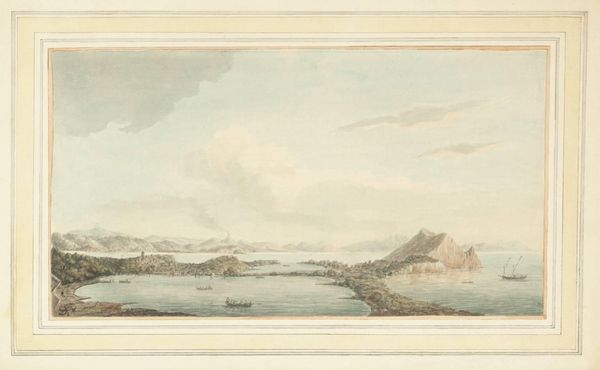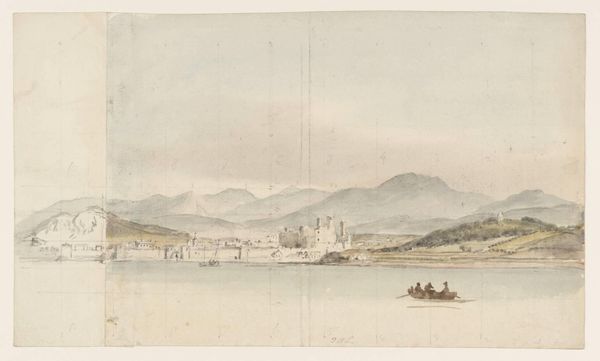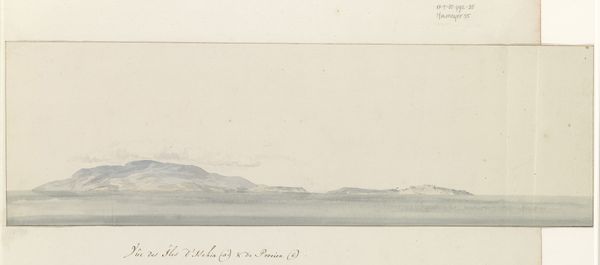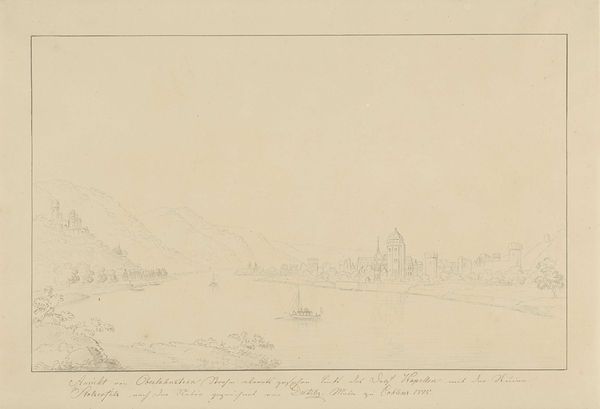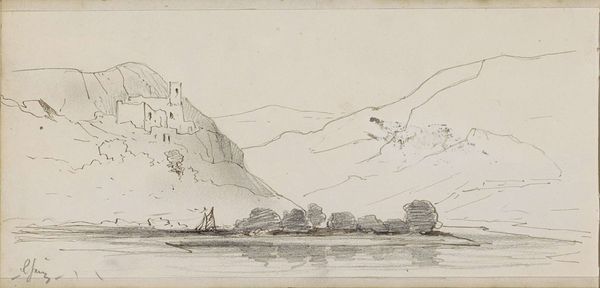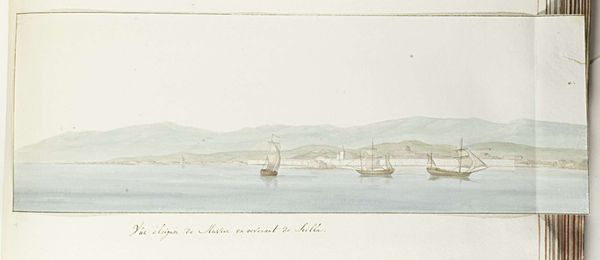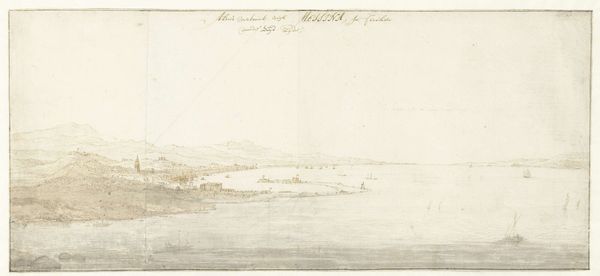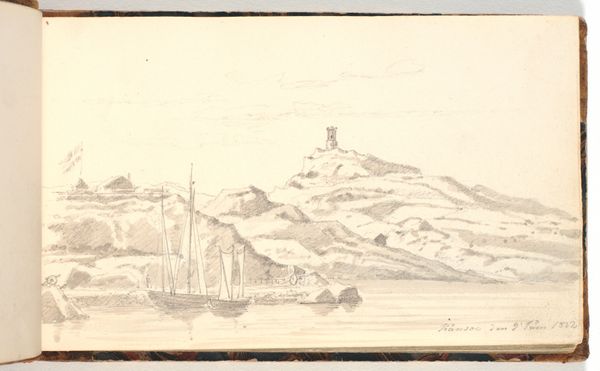
drawing, watercolor
#
drawing
#
neoclassicism
#
landscape
#
watercolor
#
cityscape
Dimensions: height 247 mm, width 744 mm
Copyright: Rijks Museum: Open Domain
Editor: Here we have "View of the Great Harbour and Naval Fleet of Palermo," a watercolor and ink drawing created in 1778 by Louis Ducros. It's a sprawling cityscape. The detail in the ships is really captivating. What draws your eye? Curator: Immediately, I think of the economics inherent in the depiction. Look at the meticulous rendering of the harbor – a locus of trade and naval power. Ducros isn't simply painting a pretty picture; he's documenting a center of commerce. What kind of labor went into building those ships, stocking those warehouses? And how does the fleet impact on maritime routes? Editor: So, you're looking at the drawing not just as art, but as a kind of document of economic activity? Curator: Precisely! Consider the materials used: paper, watercolor pigments, ink. Where did these come from? How were they processed and traded? This watercolor is not only depicting trade, it also stands for trade. Editor: I see what you mean. The materials themselves tell a story. Do you think Ducros was intentionally trying to make a statement about economics, or was he just depicting what was in front of him? Curator: It's hard to know Ducros' intent, but the *choice* to depict this scene, with such an emphasis on maritime infrastructure, speaks volumes about what was valued and considered worthy of artistic representation. Think about the social hierarchies at play here. Were materials like high-quality watercolor available to the majority, or to a privileged artistic class? Editor: That really changes how I see the artwork! It's more than just a pretty view, it's a snapshot of 18th-century industry and society, literally materialized in the pigments and paper. Curator: Exactly. It's a material record, ripe for interrogation. Editor: I’ll definitely be thinking about art's relationship to materials and labor differently from now on! Curator: Good! Looking at art in that manner gives the viewer new insights into how we assign worth to artistic production and social systems.
Comments
No comments
Be the first to comment and join the conversation on the ultimate creative platform.



